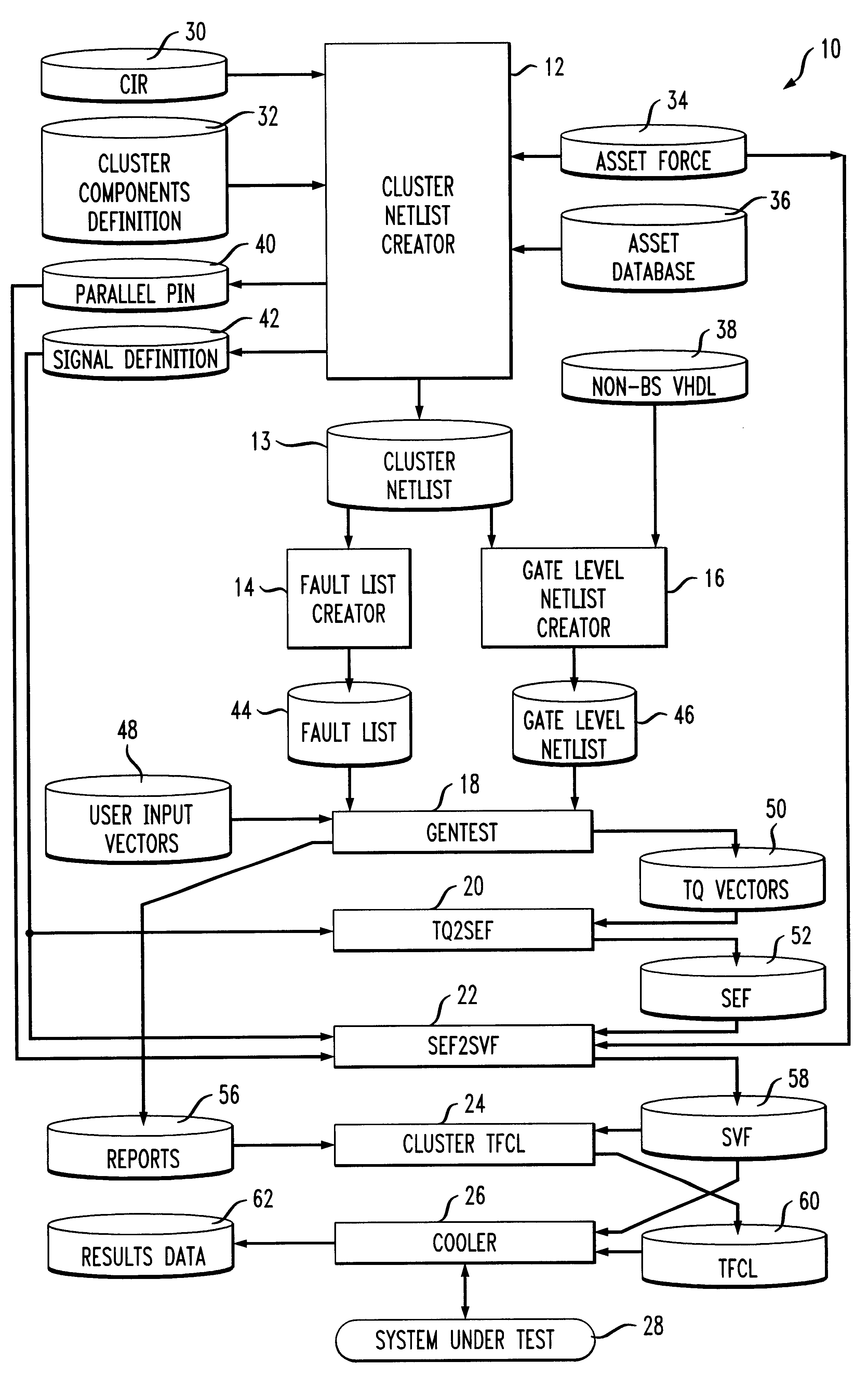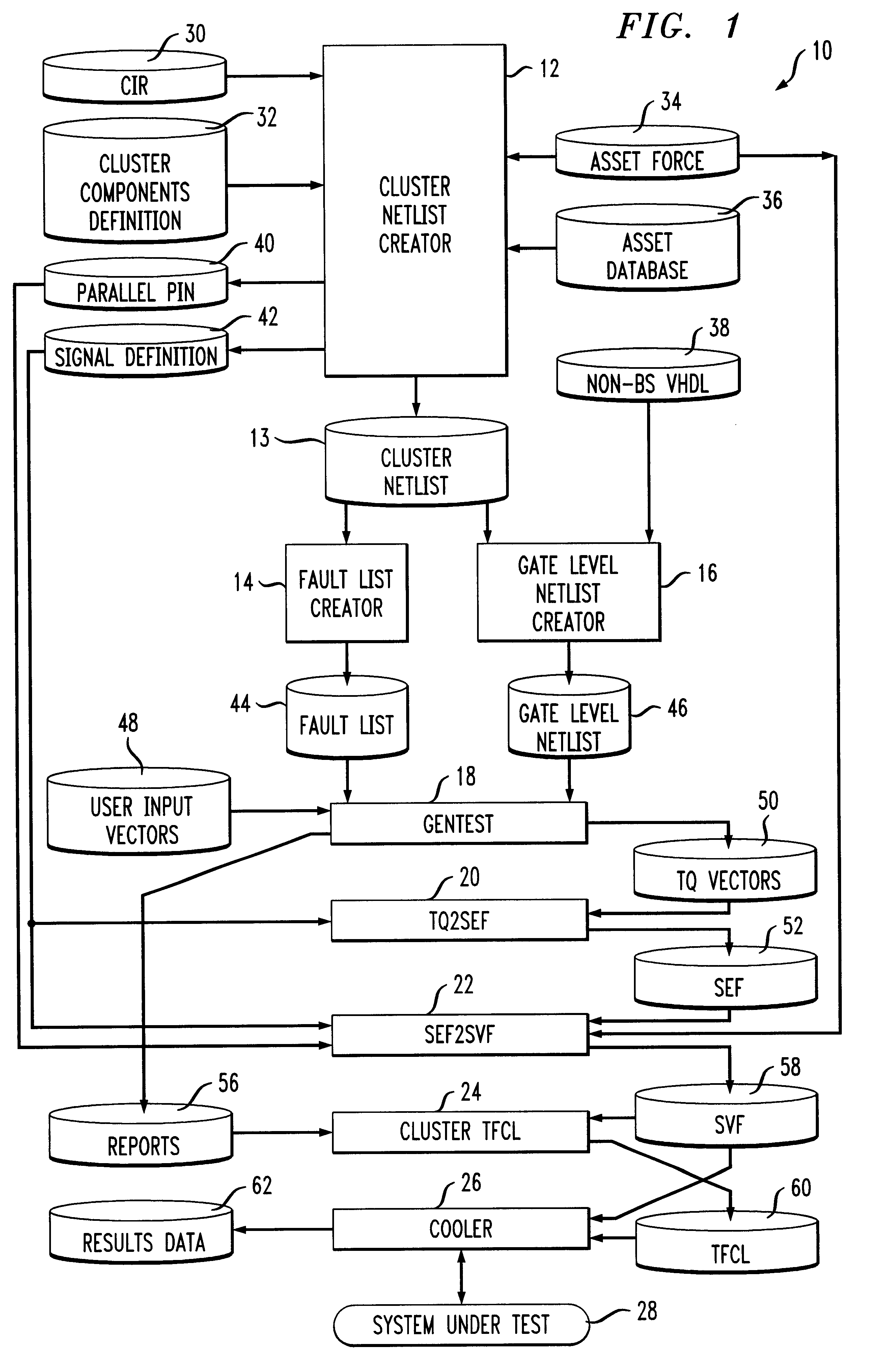Method and system for testing cluster circuits in a boundary scan environment
a technology of boundary scan environment and cluster circuit, which is applied in the field of system and method for testing digital clusters on circuit boards, can solve the problems of increasing manual testing using an automatically controlled probe, insufficient physical size of the probe, and increasing the difficulty of individual circuit boards in a system made up of one or more circuit boards
- Summary
- Abstract
- Description
- Claims
- Application Information
AI Technical Summary
Problems solved by technology
Method used
Image
Examples
Embodiment Construction
FIGS. 1 and 3 show the functional modules 10 and a method, respectively, for performing cluster tests in a boundary scan environment according to an embodiment of the present invention. Specifically, FIG. 1 shows the functional modules 10 which perform the various required tasks; FIG. 3 is a flow chart of the broad steps taken by an embodiment of the present invention. Circuit testing of this kind is generally performed in a computing environment having processors, memories, controllers, and a physical connection to the circuit board and / or particular elements on the circuit board (see FIG. 2). In FIG. 3, the first step 310 generates a cluster netlist representing the cluster portion of the circuit to be tested. In order to generate the cluster netlist, information relating to the circuit must be input into the system. For example, as shown in FIG. 1, the ASSET data base 36 supplies the Cluster Netlist Creator 12 with the complete boundary scan information relating to the board / circ...
PUM
 Login to View More
Login to View More Abstract
Description
Claims
Application Information
 Login to View More
Login to View More - R&D
- Intellectual Property
- Life Sciences
- Materials
- Tech Scout
- Unparalleled Data Quality
- Higher Quality Content
- 60% Fewer Hallucinations
Browse by: Latest US Patents, China's latest patents, Technical Efficacy Thesaurus, Application Domain, Technology Topic, Popular Technical Reports.
© 2025 PatSnap. All rights reserved.Legal|Privacy policy|Modern Slavery Act Transparency Statement|Sitemap|About US| Contact US: help@patsnap.com



